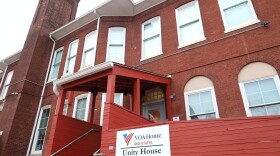Louisville has a high level of inequality between blacks and whites when it comes to homeownership and wealth. According to the 2019 State of Metropolitan Housing report released Wednesday, that’s a result of historical racist policies influencing today’s trends.
The report's authors found that lower median incomes and home values were common in majority-black neighborhoods. Between 2000 and 2017, such neighborhoods, including the ones of west Louisville, had some of the greatest declines in median home values in the city.
Half of Louisville’s black homeowners are clustered in just a few areas of the city. And two key western neighborhoods, Shively and Russell, tell different yet related stories about predominantly black areas.
A century ago, Russell was a diverse and economically vibrant neighborhood subsequently damaged by flooding, anti-investment policies and white flight. It was hit hard by the Great Recession of the mid-2000s, which resulted in already-low income and homeownership rates dropping further.
More recently, the city of Shively flipped from majority white in 2000 to majority black in 2012. Metropolitan Housing Coalition executive director Cathy Hinko called that shift another phase of white flight.
"What we see is that the home values don't keep up," she said. "We see (a) complete flip in less than 20 years."
Hinko said Shively is repeating the pattern seen in Russell over the past century. The report used Census data to show that as the population became less white, Shively’s median household income and median home values dropped. That’s both in raw numbers and compared to Jefferson County overall.
"The racial composition changes, and we see decreasing value," she said.
Hinko compared that to white flight out of west Louisville 50 years ago, when families anticipated mandatory busing to integrate public schools.
"I attribute it all to racism. I don't really see anything else that would account for that," she said.
The Metropolitan Housing Coalition said about 22,000 black households would need to become homeowners rather than renters to match rates of white homeownership in Jefferson County.
Changes such as single-family zoning, requiring developers to contribute to the Affordable Housing Trust Fund and matched savings programs could help more black households be able to afford homeownership, Hinko said. And the enactment earlier this year of a new Comprehensive Plan for Louisville could help.
For the first time, the plan places significant emphasis on housing policy. It’s what the Planning Commission uses to guide updates to development regulations. And Hinko said it’s an opportunity to push for a big change that could undo a policy rooted in racism: eliminating-single family zoning.
Due to the new Comprehensive Plan, Hinko said she believes that change is very possible.
"All those endless meetings that people working on the comprehensive plan went to: giant payoff," she said. "It now means that this is part of Louisville's future."






